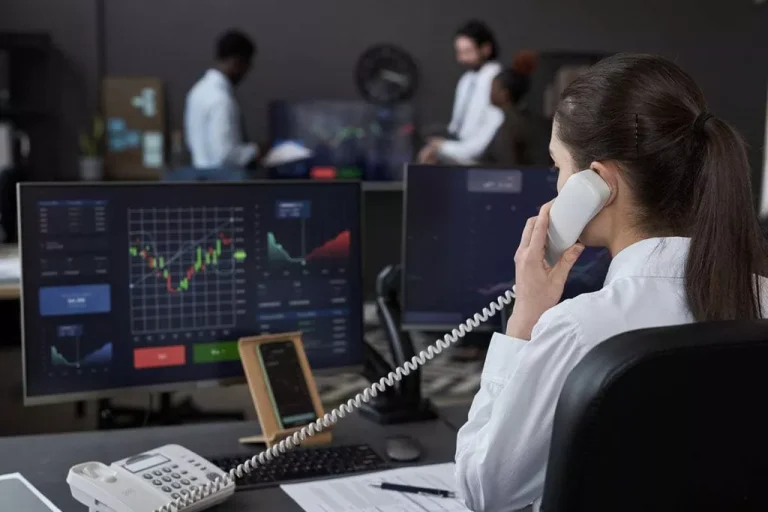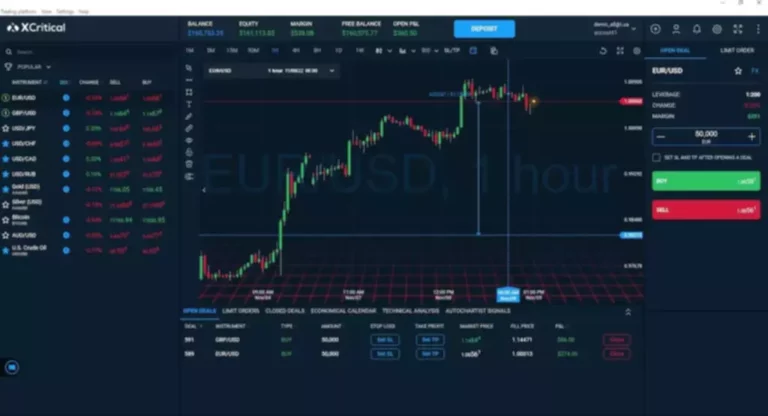Users can then independently verify the integrity of the reserve holdings by recalculating the Merkle root using the provided leaf nodes and comparing it with the published Merkle root. In this diagram, the final row from the highest is called the “leaf nodes”, the intermediate row known as the “internal nodes”, and the primary is known as the Merkle root. If a custodian or trade deposits their funds in a number of what is proof of reserves monetary establishments, information about these amounts shall be hashed (encrypted) into the leaf nodes. FTX is a prime example of the need for a reputable PoR system to mitigate counterparty dangers for traders. PoR serves as a device to advertise more transparency in crypto utilizing verifiable and unmanipulated info.
Bring Enhanced Transparency To Your Users
- Because it uses arithmetic and cryptography as an alternative of merely belief and communication like the traditional banking system does, blockchain technology can offer an even higher method to audit the financial market.
- The introductory information on Proof of Reserves crypto platforms can offer now also emphasizes the importance of Proof of Reserve.
- PoR plays a crucial role in instilling trust, reducing threat, and selling stability in the cryptocurrency area, making it an essential mechanism for each customers and issuers of digital currencies.
- Another limitation of PoR is scope since PoR only assures a company’s holdings and liabilities (if carried out right) at a moment in time, and not other risks.
- On the other aspect, the power for verification and the documentation of all on-chain transactions may help enhance the scrutiny of custodial methods.
While these efforts are a leap forward in transparency, many don’t present any window into liabilities, limiting their usefulness. BitMEX is a notable exception with a Bitcoin proof-of-reserves and proof-of-liabilities system. However, the system remains a work in progress, and the process of computing these proofs is simply too advanced for most users. The collapse of TerraUSD and FTX underscores the need for a reliable approach to prove crypto platforms correctly handle customer deposits.
Discovering The Potential Of Decentralized Identity In Blockchain
Several crypto exchanges, DeFi platforms, and others have implemented proof-of-reserves to reassure customers. By utilizing Merkle tree-based PoR, the auditor can mixture all of the users’ account stability data into a Merkle root (the single hash on the high of the tree). Proof of Reserves (PoR) verification prevents custodians from utilizing users’ deposited property to acquire loans or make investments. Investors can rely on PoR verification to observe activities in their particular person accounts and acquire clarity on how the custodian is managing their funds. For example, PoR prevents exchanges from appearing as banks that loan deposited belongings to 3rd events. Firstly, it permits users to confirm that the balances they maintain on a cryptocurrency exchange, as an example, have absolute asset backing.
Proof Of Reserve As A Defi Circuit Breaker
The FTX collapse impacted other exchanges, and it was discovered that some of them have been misusing customer property. The need for greater transparency grew considerably because of the collapse of one of many largest cryptocurrency buying and selling platforms. Before the arrival of Proof of Reserve blockchain platforms, cryptocurrency buyers trusted centralized custodians to keep their crypto holdings protected. Investors ought to have cared about reserve stability disclosure or verification from centralized custodians. Proof of Reserve is necessary as a outcome of users’ natural faith in centralized custodians has begun to say no.

Why Is Proof Of Reserves Good For Crypto?
The hot and cold wallets that centralized custodians make the most of let you see the specifics of transactions. However, it provides an total picture of the whole quantity of assets underneath the platform’s care. Numerous extra factors could be examined as part of the Proof of Reserves auditing process to verify anomalies in account balances. To guarantee ongoing trust and confidence, monetary establishments using PoR commit to regular audits and reporting.
How Does Proof Of Reserve Work?
PoR is a form of self-regulation, the place an impartial auditor generates a snapshot of the custodian’s steadiness sheet and organizes it utilizing the Merkle tree. A Merkle tree is a data structure created by repeatedly hashing (transforming plaintext to an almost irreversible value) a large knowledge set. When the extraction process for this information is run by the exchange, it is also verified by the auditors.

PoR supplies an unbiased and fully sincere picture of the funds/financial support of a crypto trade, thereby helping customers make extra knowledgeable choices. Having a PoR steadiness reassures customers that their cash is backed by actual property, whereas a larger user base results in more potential income, making it a win-win scenario. In cryptocurrency, a reserve refers to a pool of property held by an entity, such as a cryptocurrency issuer or a decentralized protocol.
As the adoption of blockchain technology keeps rising, so does the want to validate the integrity of economic institutions that handle digital assets. The crypto trade clearly wants a better method to prove the security of customer deposits unbiased of exterior events to take care of its decentralized approach whereas complying with monetary rules. But until recently, there was little urgency in deploying widespread options to increase belief among customers and customers. With PoR, any entity can show that a crypto change holds the entire thing of its users’ deposits. Therefore, exchanges are naturally encouraged not to mishandle these balances as it will break consumer belief in them and affect their continuity.

However, November 2022 noticed essentially the most remarkable example of centralized change insolvency. Sam Bankman-Fried’s FTX cryptocurrency exchange famously crumbled after Alameda Research’s (FTX’s sister buying and selling firm) balance sheet was leaked to the media. This revealed a strong indication that their accounts have been so carefully intermingled with those of FTX that if Alameda Research faltered, FTX would doubtless falter too. People feared that FTX did not have the belongings on hand to cowl all customer withdrawals.
Chainlink Proof of Reserve provides crypto and conventional monetary institutions with a way to enhance transparency by way of on-chain proof of any asset’s true collateralization. With its cross-blockchain capabilities, the system is able to helping every kind of crypto exchanges and DeFi platforms increase transparency. You can entry a PoR audit to see if a crypto custodian holds the complete reserves of your and different users’ funds. The audits ought to deter crypto exchanges from mismanaging person funds and assist improve transparency in the crypto house. Currently, most centralized exchanges and other CeFi crypto platforms, corresponding to lenders and custodians, retailer their asset knowledge in non-public, proprietary databases.
Auditors assess the accuracy and reliability of the issuer’s financial statements, affirm the existence and sufficiency of reserve belongings, and ensure compliance with regulatory requirements and business requirements. Customers could be assured within the capacity of the company to carry their assets to be solvent and liquid, due to Proof of Reserve. Customers can request Proof of Reserve audits from centralized exchanges to help them confirm the situation of the belongings on the platform. Customers might examine to verify the establishment has the assets listed on their balance and an equal or larger degree of reserves to support their deposits. Coinbase addresses these concerns by reporting its belongings to regulators in compliance with being a publicly traded firm in the United States. Since independent auditors confirm their monetary statements, customers can trust the exchange holds adequate reserves to cowl deposits.
When the penultimate two nodes are summed, it creates a ultimate node within the tree called the Merkle root. The Merkle root represents the sums of all customers and balances, used to verify a large information set with only one piece of data. An auditor takes the summed stability within the Merkle root and compares it towards the exchange’s confirmed holdings. However, this has some limitations when it comes to exchanges’ fiat holdings (which can’t participate in blockchain-powered public transactions like crypto) and assets held in chilly storage (offline). Traditionally, issuers could enlist the help of a third-party accounting firm to conduct audits on their solvency. TUSD uses Chainlink PoR in an additional way—to add much more enhanced security and transparency to the stablecoin minting process.
Similarly, a commodity-backed cryptocurrency would need a reserve of the physical asset pegged to it, such as valuable metals or oil. Reserves could be on-chain, such as high-value cryptocurrency, or off-chain, such as money or pure resources. People in charge of safekeeping these collaterals are collectively known as custodians. If you’d prefer to learn extra about this use case, learn DeFi Circuit Breakers With Chainlink Proof of Reserve and Automation. Furthermore, Proof of Reserve feeds can be used beyond the world of DeFi and smart contract purposes. For example, they’ll present traditional financial establishments with a method to increase trust with prospects and counterparties by utilizing Chainlink oracles to publish their audit stories on-chain as an immutable and tamper-proof report.

As a extremely flexible and transparent oracle network mannequin, Proof of Reserve helps accelerate the expansion of DeFi by providing collateralization knowledge on a big selection of assets and unlocking cross-chain liquidity. As Chainlink is blockchain-agnostic, Chainlink PoR feeds could be constructed to supply collateralization data on any cross-chain asset settled on any sensible contract-enabled blockchain. Tokenized assets that previously required an impractical stage of trust in the issuer at the second are able to utilize Proof of Reserve to offer the transparency required for user adoption. The advantages of Proof of Reserves crypto exchanges provide to customers would focus on the accessibility of hands-on transaction records. Proof of Reserve purposes offers a transparent account of an institution’s funds.
Paxos and CACHE Gold are utilizing Chainlink PoR to enable anyone to shortly confirm on-chain that their tokenized gold merchandise are fully backed by gold reserves held in off-chain custody. Proof of Reserve showcases a centralized institution’s capacity or exchange to allow withdrawals at any time. Now, you will need to find out about Proof of Reserve, defined in detail with a description of what it includes. The Proof of Reserve for a centralized custodian includes two distinct elements corresponding to liabilities and assets. Liabilities refer to the existing record of token deposits of consumers and property point on the pool of tokens in a group of trade addresses. Centralized custodians and exchanges should refrain from using person funds for other purposes, implying the need of matching liabilities and assets.
Read more about https://www.xcritical.in/ here.